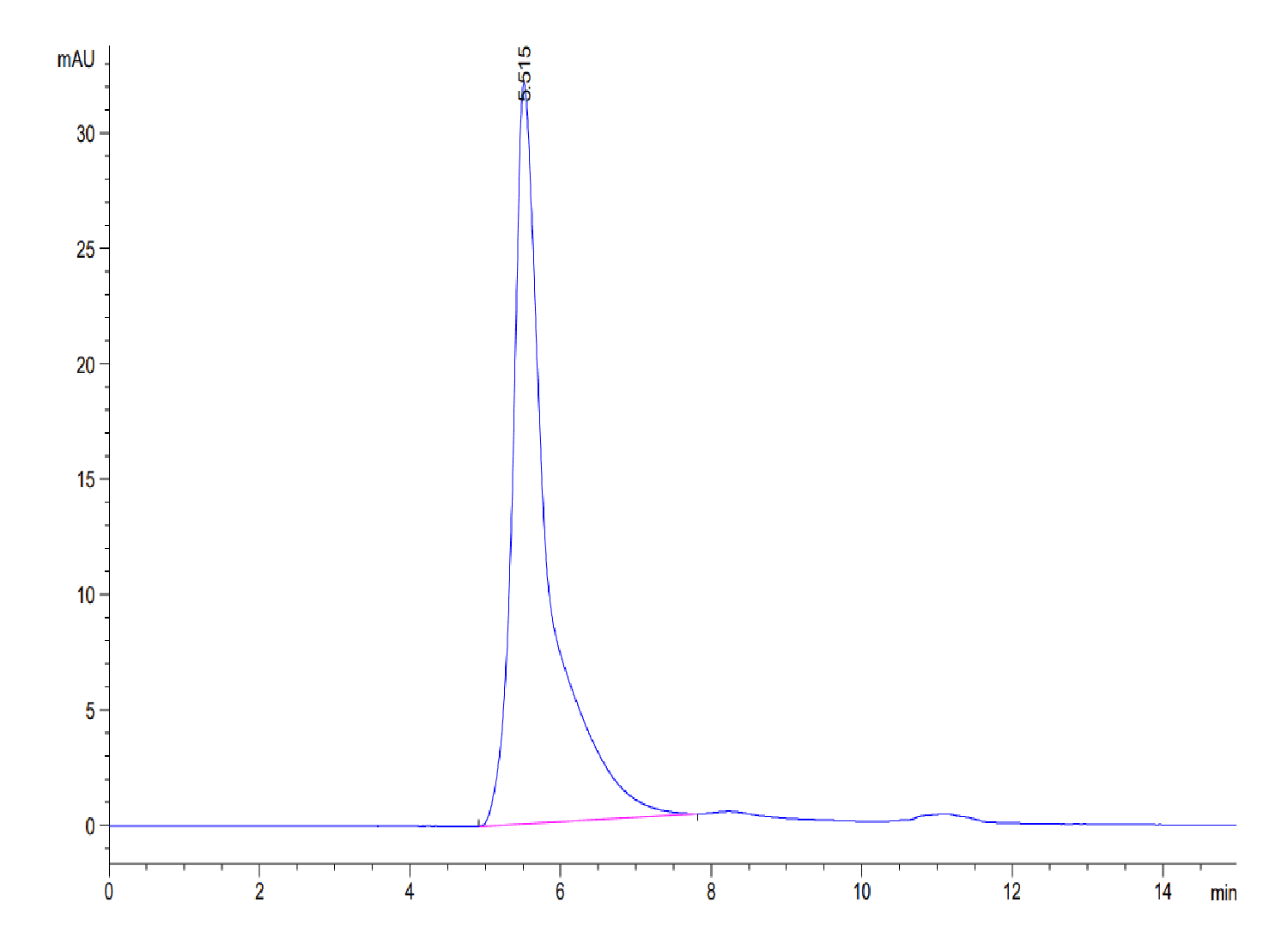| Weight | 1 lbs |
|---|---|
| Dimensions | 9 × 5 × 2 in |
| accession | XP_015304503 |
| express system | HEK293 |
| product tag | |
| purity | > 90% as determined by HPLC |
| background | CD24 is a sialoglycoprotein expressed at the surface of most B lymphocytes and differentiating neuroblasts. It is also expressed on neutrophils and neutrophil precursors from the myelocyte stage onwards. The potential for targeting CD24 in cancer therapy seems promising, as CD24 is overexpressed in many human cancers. |
| molecular weight | The target protein has a predicted MW of 3.8 kDa. |
| available size | 100 µg, 500 µg |
| endotoxin | Less than 1EU per μg by the LAL method. |
Cynomolgus CD24 Protein-VLP 3973
$1,500.00 – $5,000.00
Summary
- Expression: HEK293
- Pure: Yes (SDS-PAGE)
- Amino Acid Range: Ser26-Gly57
Cynomolgus CD24 Protein-VLP 3973
| protein |
|---|
| Size and concentration 100, 500µg and liquid |
| Form Liquid |
| Storage Instructions Valid for 12 months from date of receipt when stored at -80°C. Recommend to aliquot the protein into smaller quantities for optimal storage. Please minimize freeze-thaw cycles. |
| Storage buffer Shipped with dry ice. |
| Purity > 95% as determined by Tris-Bis PAGE |
| target relevance |
|---|
| CD24 is a sialoglycoprotein expressed at the surface of most B lymphocytes and differentiating neuroblasts. It is also expressed on neutrophils and neutrophil precursors from the myelocyte stage onwards. The potential for targeting CD24 in cancer therapy seems promising, as CD24 is overexpressed in many human cancers. |
| Protein names Signal transducer CD24 (Lymphocyte antigen 52) (Ly-52) (M1/69-J11D heat stable antigen) (HSA) (Nectadrin) (R13-Ag) (X62 heat stable antigen) (CD antigen CD24) |
| Gene names Cd24,Cd24 Cd24a Ly-52 |
| Protein family CD24 family |
| Mass 10090Da |
| Function May have a pivotal role in cell differentiation of different cell types. May have a specific role in early thymocyte development. Signaling could be triggered by the binding of a lectin-like ligand to the CD24 carbohydrates, and transduced by the release of second messengers derived from the GPI-anchor. Modulates B-cell activation responses (By similarity). In association with SIGLEC10 may be involved in the selective suppression of the immune response to danger-associated molecular patterns (DAMPs) such as HMGB1, HSP70 and HSP90 (PubMed:19264983). Plays a role in the control of autoimmunity (PubMed:20200274). |
| Subellular location Cell membrane; Lipid-anchor, GPI-anchor. |
| Tissues In lymphoid, myeloid, and erythroid cells. |
| Structure Interacts with SIGLEC10; the probable CD24:SIGLEC10 complex is proposed to inhibit HGMB1-mediated tissue damage immune response. |
| Post-translational modification The identity of the N- and O-linked polysaccharides is not reported in PubMed:1530634. The O-linked polysaccharides on Ser-30, Ser-41, Ser-43, and Thr-51 are probably the mucin type linked to GalNAc. |
| Target Relevance information above includes information from UniProt accession: P24807 |
| The UniProt Consortium |
Publications
Publications
| pmid | title | authors | citation |
|---|---|---|---|
| We haven't added any publications to our database yet. | |||
Protocols
| relevant to this product |
|---|
Documents
| # | ||
|---|---|---|
| Please enter your product and batch number here to retrieve product datasheet, SDS, and QC information. | ||















